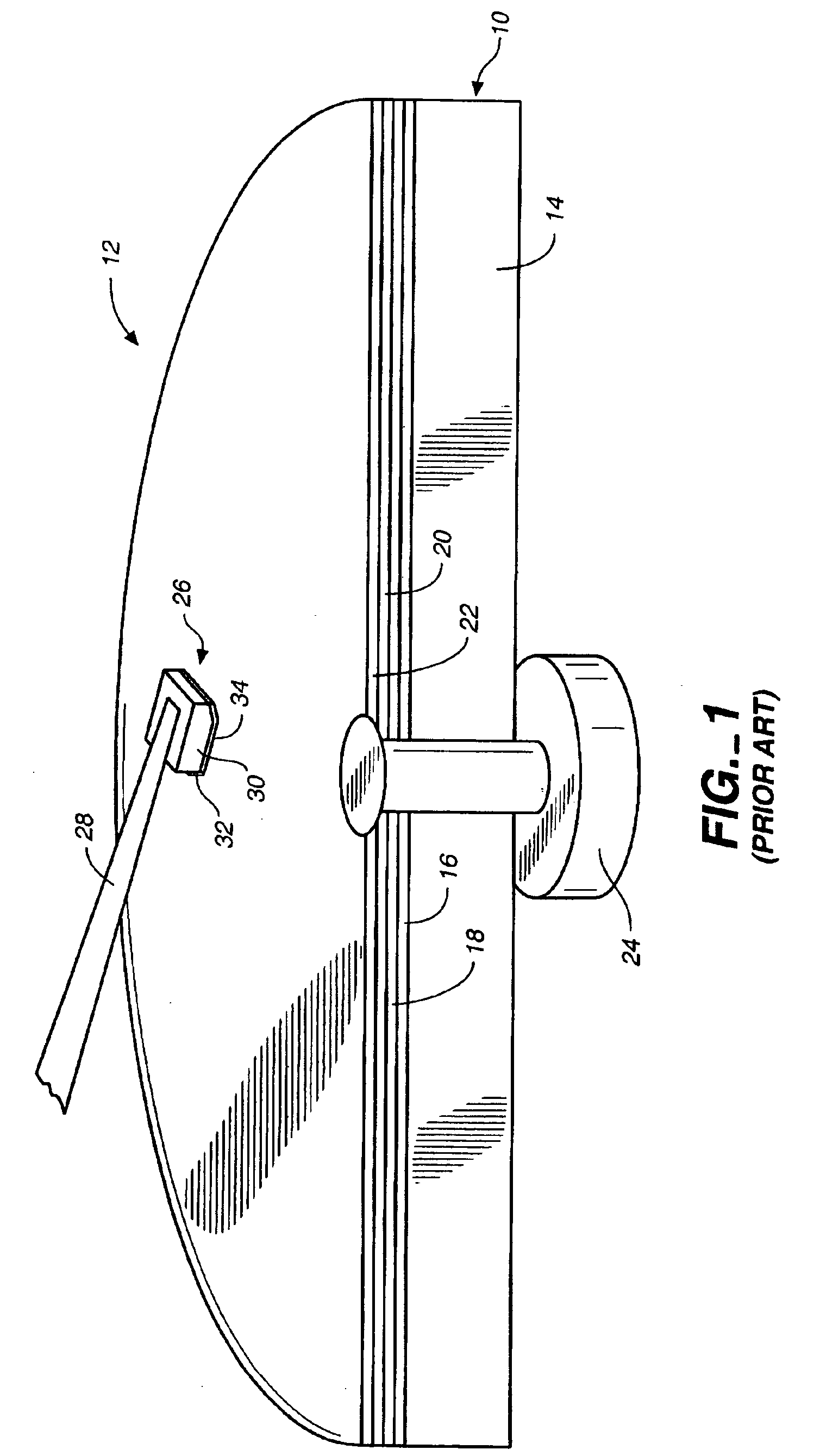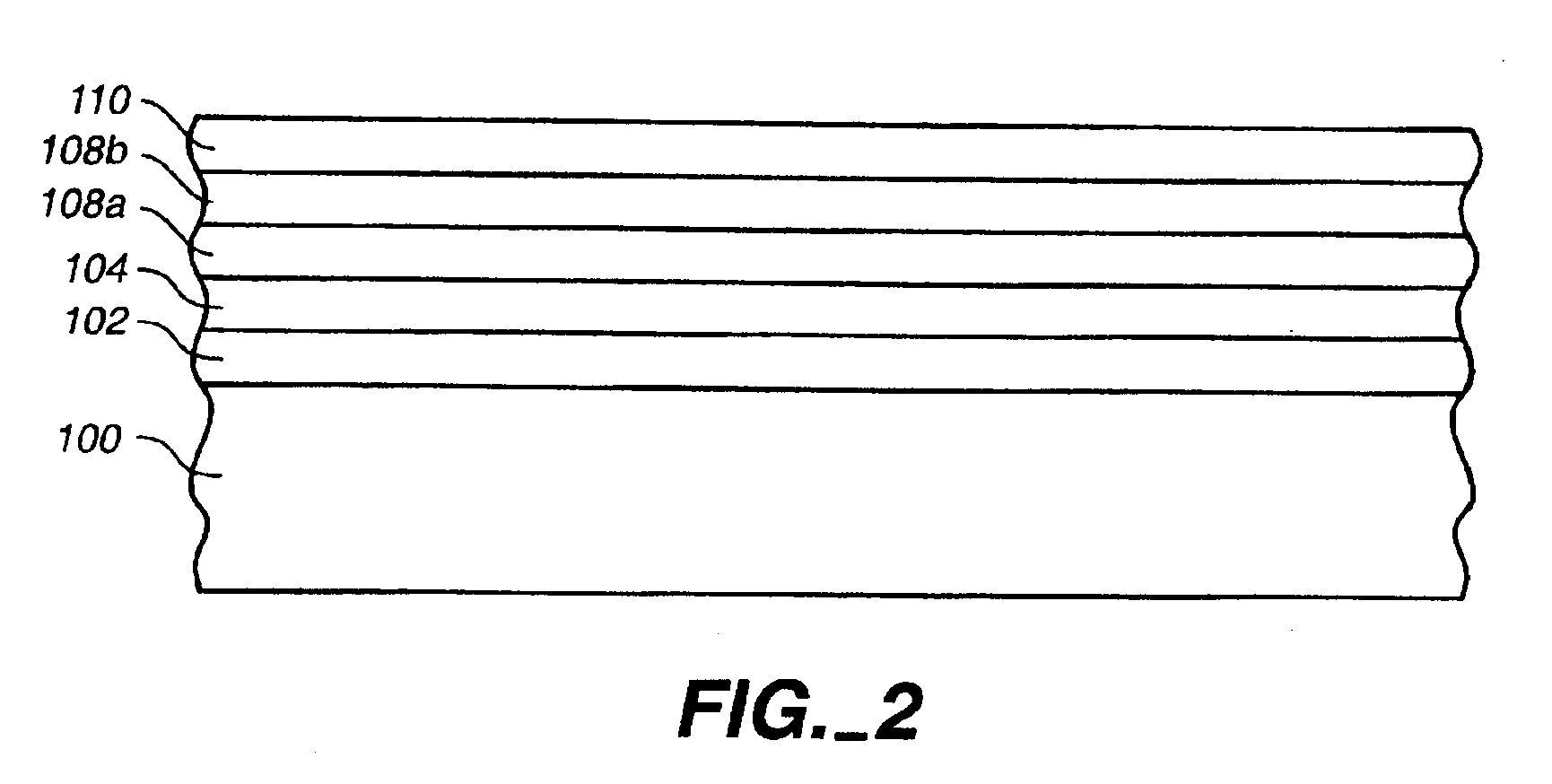Magnetic disk comprising a first carbon overcoat having a high SP3 content and a second carbon overcoat having a low SP3 content
a technology of carbon protective overcoat and magnetic disk, which is applied in the direction of solid-state diffusion coating, instruments, record information storage, etc., can solve the problems of high sp3 carbon formed by chemical vapor deposition, failure of glide tests, etc., and achieve high sp3 content and resist wear and scratching
- Summary
- Abstract
- Description
- Claims
- Application Information
AI Technical Summary
Benefits of technology
Problems solved by technology
Method used
Image
Examples
Embodiment Construction
A process in accordance with the present invention comprises the following steps. First, a substrate 100 (FIG. 2) is provided. The substrate can be glass, glass ceramic, NiP-plated aluminum or other substrate material. Substrate 100 is then textured, e.g. using mechanical, laser or chemical techniques. (Such techniques are well known in the art.) One or more underlayers 102 (e.g. Cr, a Cr alloy, NiP, NiAl or other material) is deposited, e.g. by sputtering, onto substrate 100. Underlayer 102 can be about 10 to 30 nm thick.
One or more magnetic alloy layers 104 (e.g. a Co or Fe alloy) is deposited, e.g. by sputtering, onto underlayer 102. Magnetic layer 104 can be about 15 nm thick. In one embodiment, underlayer 102 and magnetic alloy layer 104 are formed using the method and materials described in U.S. patent application Ser. No. 08 / 874,753, filed by Bertero et al. on Dec. 4, 1997 and incorporated herein by reference.
A first overcoat 108a having a relatively high SP3 content is depos...
PUM
| Property | Measurement | Unit |
|---|---|---|
| thickness | aaaaa | aaaaa |
| thick | aaaaa | aaaaa |
| thick | aaaaa | aaaaa |
Abstract
Description
Claims
Application Information
 Login to View More
Login to View More - R&D
- Intellectual Property
- Life Sciences
- Materials
- Tech Scout
- Unparalleled Data Quality
- Higher Quality Content
- 60% Fewer Hallucinations
Browse by: Latest US Patents, China's latest patents, Technical Efficacy Thesaurus, Application Domain, Technology Topic, Popular Technical Reports.
© 2025 PatSnap. All rights reserved.Legal|Privacy policy|Modern Slavery Act Transparency Statement|Sitemap|About US| Contact US: help@patsnap.com



